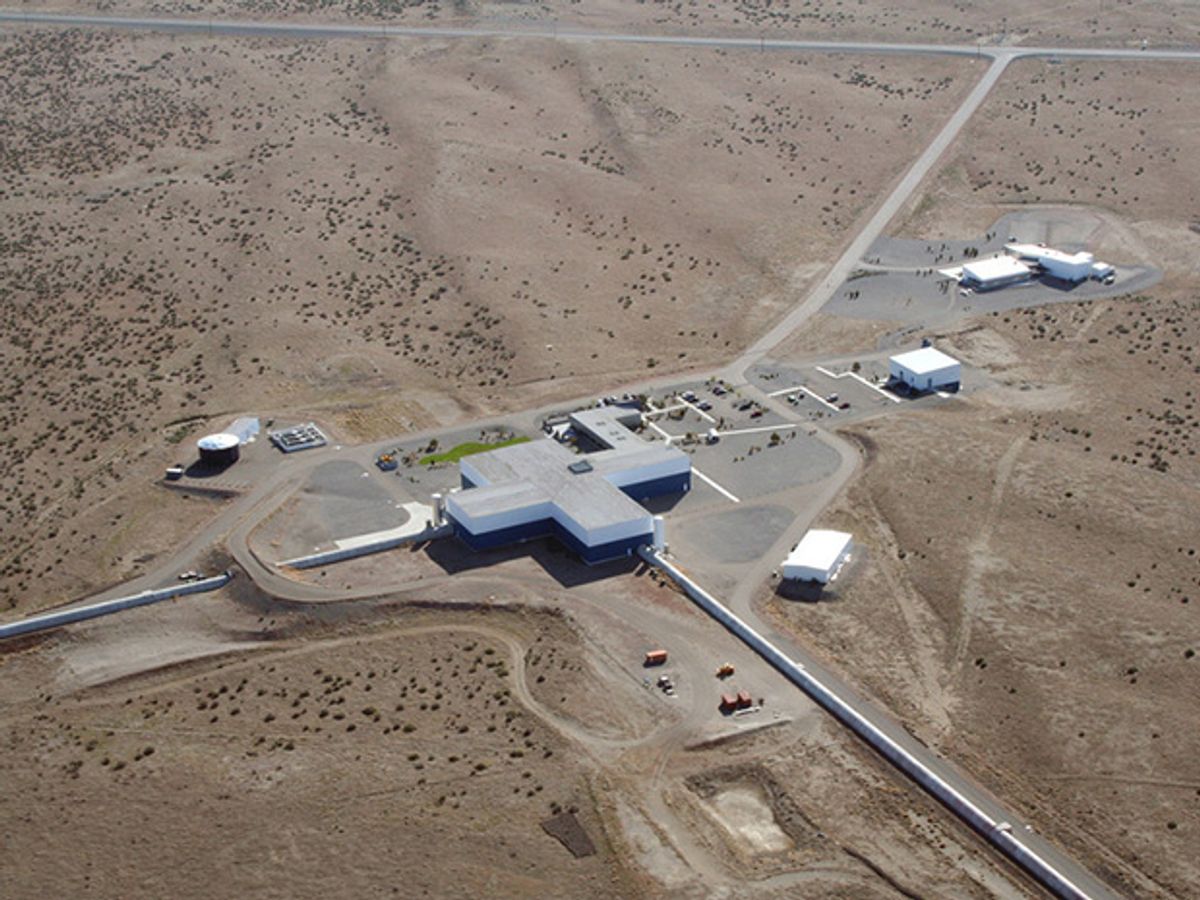On Friday, the hunt for gravitational waves began again for the Laser Interferometer Gravitational-Wave Observatory (LIGO)—the largest instrument of its kind. The restart follows a five-year-long, US $200-million project to overhaul the experiment’s detectors.
Many physicists believe the revamped experiment, dubbed Advanced LIGO, will be the first to find direct evidence of gravitational waves: ripples in the fabric of space-time that can be created by, among other things, a pair of neutron stars or black holes orbiting each other.
Gravitational waves were first theorized in 1916 by Albert Einstein as a consequence of his general theory of relativity, which celebrates its centennial this year. There is already indirect evidence of the existence of such waves: The Hulse-Taylor pulsar, which was discovered in 1974, is steadily spiraling into its partner, and the pair is thought to be releasing energy in the form of gravitational waves in the process.
Direct detection is more difficult. LIGO, which consists of stations in Livingston, La. and Hanford, Wash., hunts for these gravitational waves by sending laser light down an L-shaped pair of 4-kilometer-long tunnels. The interference between the light that’s reflected back can be used to discern extraordinarily fine changes in the relative length of the arms, which could be stretched or shrunk by a passing gravitational wave. The fine measurements must be done against near constant noise from sources much closer to home, including vibrations from crashing ocean waves, earthquakes, and nearby truck traffic.
LIGO’s original incarnation, which ran for eight years until 2010, was ultimately sensitive to changes in length of about a thousandth the width of a proton. But even that sensitivity, when paired with the low chance of there being a strong gravitational wave-producing event in Earth’s vicinity, wasn’t enough to nab a detection.
The upgraded LIGO includes revamped seismic isolation systems, beefed-up lasers, and bigger mirrors. “There is nothing left of initial LIGO except the vacuum system,” LIGO Laboratory executive director David Reitze told Physics Today.
When the detectors ramp up to their full sensitivity, Advanced LIGO is expected to be able to pick up gravitational wave-creating events–in particular the violent, inspiraling merger of two neutron stars—in a volume of space 1000 times bigger than what the initial incarnation of LIGO could probe. Some are quite optimistic about the new experiment’s chances. According to a report in Nature, some physicists peg the chances of a detection in the next three months as high as 1 in 3.
At the very least, the team has gotten a slight head start with this first data run. The LIGO team conducted an engineering run in the month leading up to the start of observations, Reitze told IEEE Spectrum: “The quality of the data is good enough that we will use some of it in our searches.”
Advanced LIGO is leading a larger international charge toward witnessing a gravitational wave. Italy is set to complete a revamp of its 3-km VIRGO detector next year. LIGO is contributing the hardware needed to build another LIGO detector in India. Japan is working on a detector called KAGRA. And physicists are also taking the first steps toward an eventual orbiting gravitational wave detector, with the launch of a technology demonstration—the European Space Agency’s LISA Pathfinder—later this year.
At some point in the not-so-distant future, it’s reasonable to expect that the first detection of gravitational waves will finally be behind us. And those waves will become another tool—as photons and neutrinos are today—for exploring the universe around us.
Rachel Courtland, an unabashed astronomy aficionado, is a former senior associate editor at Spectrum. She now works in the editorial department at Nature. At Spectrum, she wrote about a variety of engineering efforts, including the quest for energy-producing fusion at the National Ignition Facility and the hunt for dark matter using an ultraquiet radio receiver. In 2014, she received a Neal Award for her feature on shrinking transistors and how the semiconductor industry talks about the challenge.



